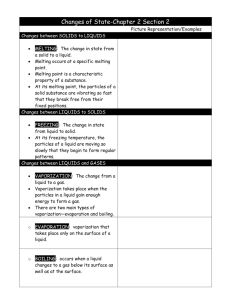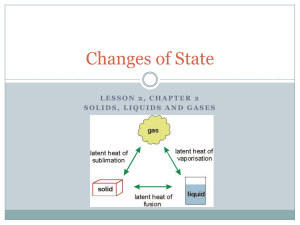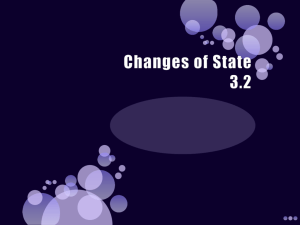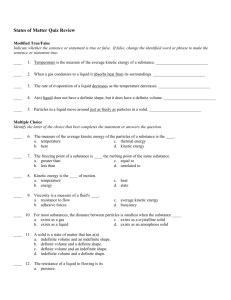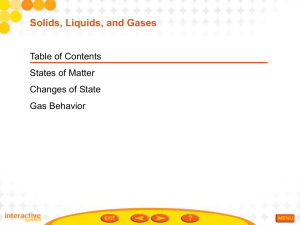Changes in State Copy
advertisement
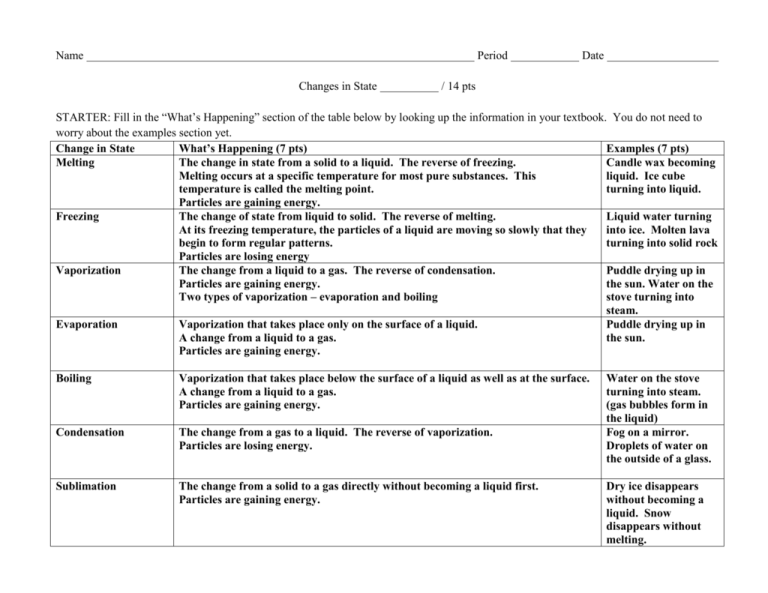
Name Period Changes in State Date / 14 pts STARTER: Fill in the “What’s Happening” section of the table below by looking up the information in your textbook. You do not need to worry about the examples section yet. Change in State What’s Happening (7 pts) Examples (7 pts) Melting The change in state from a solid to a liquid. The reverse of freezing. Candle wax becoming Melting occurs at a specific temperature for most pure substances. This liquid. Ice cube temperature is called the melting point. turning into liquid. Particles are gaining energy. Freezing The change of state from liquid to solid. The reverse of melting. Liquid water turning At its freezing temperature, the particles of a liquid are moving so slowly that they into ice. Molten lava begin to form regular patterns. turning into solid rock Particles are losing energy Vaporization The change from a liquid to a gas. The reverse of condensation. Puddle drying up in Particles are gaining energy. the sun. Water on the Two types of vaporization – evaporation and boiling stove turning into steam. Evaporation Vaporization that takes place only on the surface of a liquid. Puddle drying up in A change from a liquid to a gas. the sun. Particles are gaining energy. Boiling Vaporization that takes place below the surface of a liquid as well as at the surface. A change from a liquid to a gas. Particles are gaining energy. Condensation The change from a gas to a liquid. The reverse of vaporization. Particles are losing energy. Sublimation The change from a solid to a gas directly without becoming a liquid first. Particles are gaining energy. Water on the stove turning into steam. (gas bubbles form in the liquid) Fog on a mirror. Droplets of water on the outside of a glass. Dry ice disappears without becoming a liquid. Snow disappears without melting.
